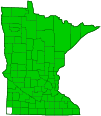Wild columbine
(Aquilegia canadensis)
Conservation • Wetland • Description • Habitat • Ecology • Use • Distribution • Taxonomy
Conservation Status |
|||
| IUCN Red List | not listed |
||
| NatureServe | NNR - Unranked SNR - Unranked |
||
| Minnesota | not listed |
||
Wetland Indicator Status |
|||
| IUCN Red List | FAC - Facultative |
||
| NatureServe | FACU - Facultative upland |
||
| Minnesota | FACU - Facultative upland |
||
Description |
Wild columbine is a 1′ to 3′ tall, erect, perennial forb that rises from a stout taproot and thin, woody rhizomes. Basal leaves emerge in the early spring on long stems. The leaves are much shorter than the stems. They are divided into groups of 3 leaflets that are up to 3″ long and 2″ wide. Each leaflet is divided again into 3 triangular or wedge-shaped lobes. The lobes are often themselves divided into 2 or more secondary lobes that resemble large, rounded teeth. The leaflets may be stalked or unstalked, with both types occurring on the same plant. The upper surface of the leaf is hairless and may be somewhat covered with a whitish, waxy bloom (glaucous). The lower surface is glaucous and may be finely hairy near the base. In the late spring stems are produced. The stems are slender, sparingly branched, hollow, cylindrical, and hairless, though they may be slightly hairy on the upper portion. Stem leaves are alternate and similar to the basal leaves but smaller and on shorter stalks. They become progressively smaller with shorter stalks as they ascend the stem. The leaves are often tinged with red, sometimes just near the margins. The inflorescence is a solitary flower or pair of flowers at the end of a branch. The flowers are showy and hang downward at the end of a long, erect flower stalk. They are 1″ to 2″ long and ⅔″ to 1¾″ wide. They have 5 petal-like, red, ¼″ to ¾″ long sepals, and 5 red and yellow petals. The tips of the petals are yellow and rounded. The base is a long, slender, erect or slightly-spreading, red nectar spur with a slightly-enlarged tip. Yellow stamens and styles project well beyond the petals. There is no fragrance. The fruits are 5 erect pods, each ⅔″ to 1¼″ long with a beak ⅛″ to ½″ long. |
Height |
1′ to 3′ |
Flower Color |
Red with yellow centers |
Similar Species |
Smallflower columbine (Aquilegia brevistyla) has smaller, blue and white flowers. The spurs are hooked at the tip. It has been recorded only in Clay County. Purple meadow-rue (Thalictrum dasycarpum) is usually much taller. The leaves appear similar but are less deeply lobed. |
Habitat |
Dry. Woodland edges, river banks. Full sun to full shade. |
Ecology |
Flowering |
May to July |
Pests and Diseases |
|
Use |
|
Distribution |
||
|
Sources Biodiversity occurrence data published by: Minnesota Biodiversity Atlas (accessed through the Minnesota Biodiversity Atlas Portal, bellatlas.umn.edu, 9/3/2025). |
|
| 9/3/2025 | ||
Nativity |
||
| Native | ||
Occurrence |
||
Common |
||
Taxonomy |
|
Kingdom |
|
Subkingdom |
Pteridobiotina |
Phylum |
Tracheophyta (Vascular Plants) |
Class |
|
Order |
Ranunculales (Buttercups, Poppies, and Allies) |
Family |
Ranunculaceae (Buttercup) |
Subfamily |
Thalictroideae (columbines and meadow-rues) |
Genus |
Aquilegia (columbines) |
Subordinate Taxa |
|
|
|
Synonyms |
|
Aquilegia australis Aquilegia canadensis ssp. americana Aquilegia canadensis var. aurea Aquilegia canadensis var. australis Aquilegia canadensis var. canadensis Aquilegia canadensis var. coccinea Aquilegia canadensis var. eminens Aquilegia canadensis var. flaviflora Aquilegia canadensis var. hybrida Aquilegia canadensis var. latiscula Aquilegia canadensis var. longistyla Aquilegia canadensis var. phippenii Aquilegia canadensis var. vera Aquilegia canadensis var. violacea Aquilegia coccinea Aquilegia elegans Aquilegia eminens Aquilegia flaviflora Aquilegia gaertneri Aquilegia gartneri Aquilegia latiuscula Aquilegia phoenicantha Aquilegia variegata |
|
Common Names |
|
American columbine Canadian columbine Canadian-columbine Colorado columbine columbine eastern red columbine honeysuckle meeting-houses red columbine wild columbine |
|
Glossary
Term
Definition
Visitor Photos
Share your photo of this plant.
This button not working for you?
Simply email us at info@MinnesotaSeasons.com.
Attach one or more photos and, if you like, a caption.
Tim |
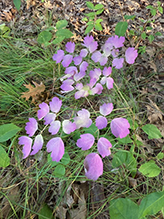 |
Greg Watson |
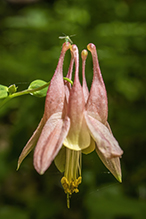 |
Alfredo Colon |
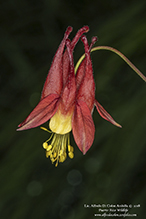 |
Red Columbine flower, Aquilegia canadiensis |
Wayne Rasmussen |
||
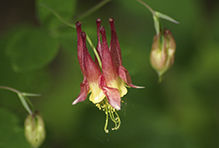 |
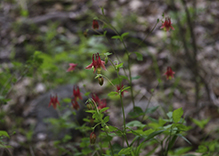 |
|
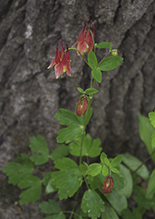 |
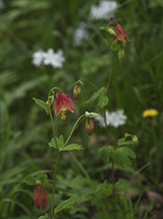 |
|
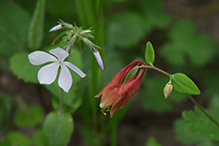 |
||
Wild columbine and wild blue phlox |
||
MinnesotaSeasons.com Photos
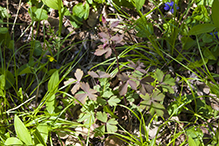 |
 |
|
Plant |
Inflorescence |
|
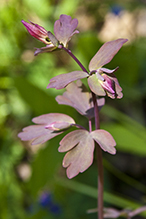 |
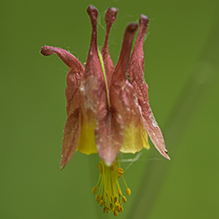 |
|
Inflorescence |
Flower |
|
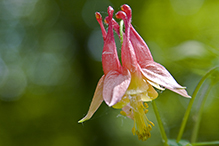 |
 |
|
Flower |
Flower |
|
 |
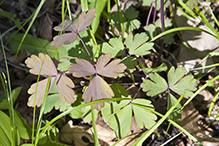 |
|
Leaves |
Leaves |
|
 |
||
Leaves |
|

Slideshows
Aquilegia canadensis (Wild Columbine)
Allen Chartier
Plant portrait - Columbine (Aquilegia canadensis)
Identify that Plant
Other Videos

Visitor Videos
Share your video of this plant.
This button not working for you?
Simply email us at info@MinnesotaSeasons.com.
Attach a video, a YouTube link, or a cloud storage link.
Other Videos
Minnesota Native Plant - Canada Columbine (Aquilegia Canadensis)
MNNativePlants
MyNature Apps; Identifying Wild Columbine, Aquilegia canadensis
MyNatureApps
Columbine (Aquilegia canadensis)
PrairieMoonNursery
wild columbine (Aquilegia canadensis)
wvoutdoorman

Visitor Sightings
Report a sighting of this plant.
This button not working for you?
Simply email us at info@MinnesotaSeasons.com.
Be sure to include a location.
Minnesota Seasons Sightings
Avon Hills Forest SNA, North Unit
Bertram Chain of Lakes Regional Park
Carpenter St. Croix Valley Nature Center
Charles A. Lindbergh State Park
Hardscrabble Woods / MG Tusler Sanctuary
Itasca Wilderness Sanctuary SNA
John Peter Hoffman Spring Brook Valley WMA
Lake Alexander Woods SNA, South Unit
Mary Schmidt Crawford Woods SNA
Minnesota Valley State Recreation Area, Lawrence Unit
Nerstrand Big Woods State Park
P.N. and G.M. Nelson Wildlife Sanctuary

